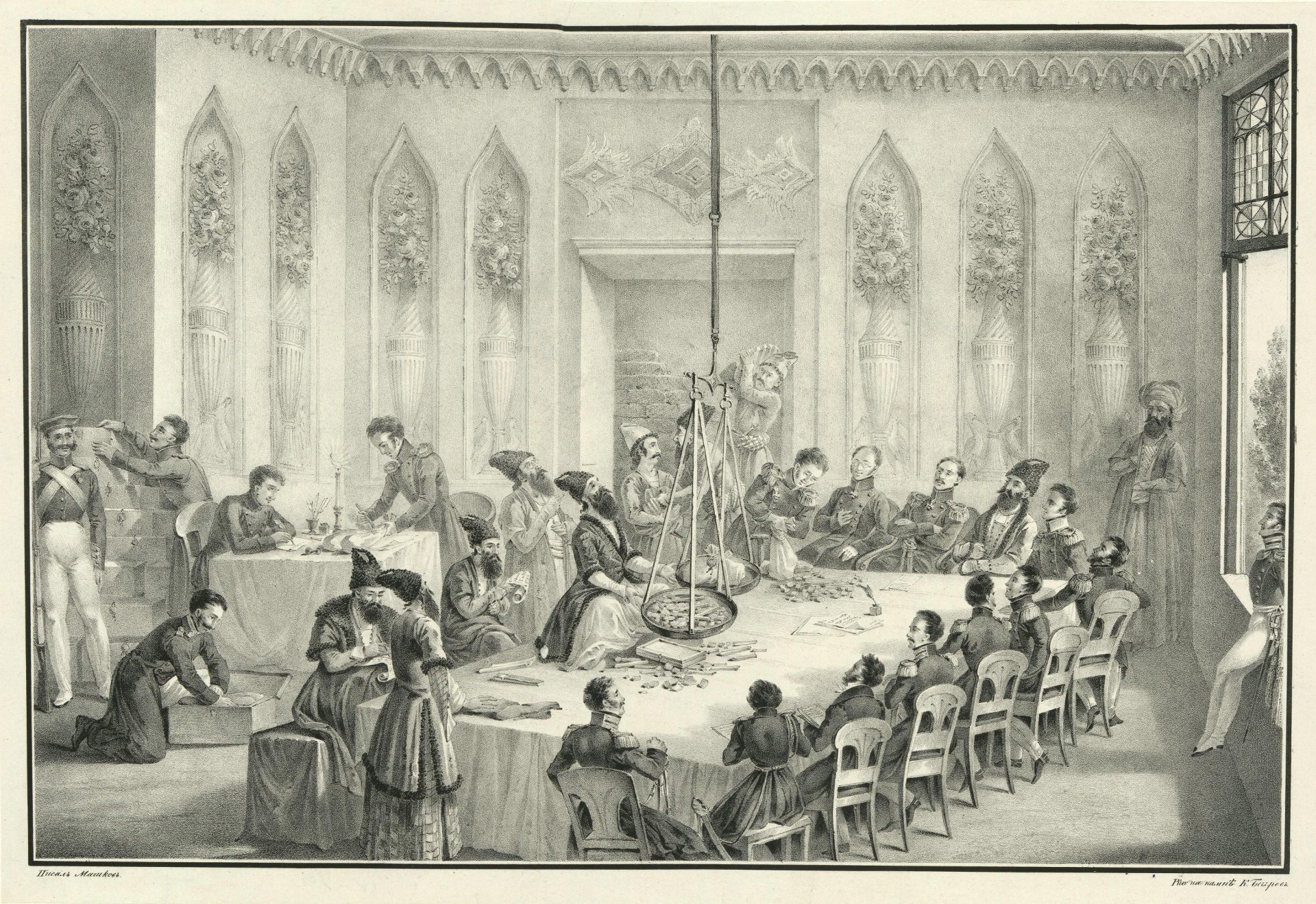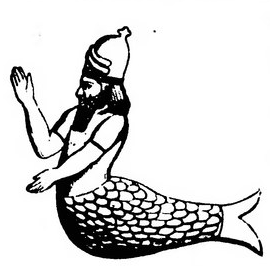|
─░vanovka
─░vanovka () is a village and municipality in the Ismailli District of Azerbaijan. It is at a height of above sea level, from Ismailli region. The municipality consists of the villages of ─░vanovka and K├╝l├╝ll├╝, Ismailli, K├╝l├╝ll├╝. This is the last village in Azerbaijan with a significant population belonging to the Russian ethnic religious community of Molokans. This is the last place in the world where Kolkhoz (collective farms) from Azerbaijan Soviet Socialist Republic, Soviet times are preserved. History The village was founded in 1834 by Russian peasants, predominantly Molokans from central Russian Empire, Russia, that had been resettled in the Caucasus by Nicholas I of Russia, Tsar Nicholas I in the years following the Treaty of Turkmenchay at the end of the Russo-Persian War (1826ŌĆō1828). Further Russian peasants migrated to the area over time. These were mostly Molokans and some Doukhobors, coming from the cities of Tambov, Voronezh, Rostov and Stavropol. In 1840, ... [...More Info...] [...Related Items...] OR: [Wikipedia] [Google] [Baidu] |
Administrative Divisions Of Azerbaijan
Azerbaijan is administratively divided into 67 districts () and 11 cities () that are subordinate to the Republic. Out of these districts and cities, 7 districts and 1 city are located within the Nakhchivan Autonomous Republic. The districts are further divided into Municipalities of Azerbaijan, municipalities (). Additionally, the districts of Azerbaijan are grouped into 14 Economic regions of Azerbaijan, Economic Regions (). On 7 July 2021, President of Azerbaijan Ilham Aliyev signed a decree "On the new division of economic regions in the Republic of Azerbaijan". Administrative divisions Contiguous Azerbaijan The list below represents the districts of contiguous Azerbaijan. For those of the Nakhchivan exclave, see further below. Nakhchivan Autonomous Republic The seven districts and one municipality of the Nakhchivan Autonomous Republic are listed below. Economic regions Nagorno-Karabakh The territory of former Nagorno-Karabakh Autonomous Oblast presently ... [...More Info...] [...Related Items...] OR: [Wikipedia] [Google] [Baidu] |
Treaty Of Turkmenchay
The Treaty of Turkmenchay (; ) was an agreement between Qajar Iran and the Russian Empire, which concluded the Russo-Persian War (1826ŌĆō1828). It was second of the series of treaties (the first was the 1813 Treaty of Gulistan and the last, the 1881 Treaty of Akhal) signed between Qajar Iran and Imperial Russia that forced Iran to cede or recognize Russian influence over the territories that formerly were part of Iran. The treaty was signed on 22 February 1828 (5 Sha'ban 1243) in Torkamanchay (a village between Tabriz and Tehran). It made Iran cede the control of several areas in the South Caucasus to Russia: the Erivan Khanate, the Nakhchivan Khanate and the remainder of the Talysh Khanate. The boundary between Russia and Iran was set at the Aras River. These territories are now Armenia, the south of the Republic of Azerbaijan, Nakhchivan and I─¤d─▒r Province (now part of Turkey). The treaty was signed for Iran by the Crown Prince Abbas Mirza and Allah-Yar Khan Asef ... [...More Info...] [...Related Items...] OR: [Wikipedia] [Google] [Baidu] |
Khinalug
Khinalug or Khinalyg (; Khinalug: ''K╔Öt┼¤'') is a municipality and an ancient Caucasian village with origins dating back to the Caucasian Albanian period. It is located high up in the mountains of Quba District, Azerbaijan. The municipality of Khinalug is part of the Quba District and consists of the villages of Khinalug and Galaykhudat. The village was included in the ''Cultural Landscape of Khinalug People and "K├Č├¦ Yolu" Transhumance Route'' UNESCO World Heritage Site in 2023. Location Khinalug is located southwest of Quba on the Greater Caucasus mountain ridge, which separates the Northern Caucasus in Russia from the South Caucasus. It is the highest, most remote and isolated village in Azerbaijan, as well as one of the highest in the entire Caucasus region. The village experiences significant weather fluctuations between summer and winter, with temperatures ranging from ŌłÆ20 ┬░C to 18 ┬░C. Khinalug has a population of about 2,000 people. The residents speak ... [...More Info...] [...Related Items...] OR: [Wikipedia] [Google] [Baidu] |
Kulull├╗
Kulull├╗, inscribed Æä® ÆćĮÆŹćÆć╗, "Fish-Man", was an ancient Mesopotamian mythical monster possibly inherited by Marduk from his father Ea. In later Assyrian mythology, he was associated with ''kuliltu'', "Fish-Woman", and statues of them were apparently located in the Nab├╗ temple in Nimrud, ancient Kalhu, as referenced on a contemporary administrative text. Ritual uses He had the head, arms and torso of a human and the lower body and tail of a fish and was portrayed in sculptures found in palaces and on kudurrus. With a bitumen smeared clay figurine, he seems to have found special purpose attracting prosperity and divine benevolence to households, as his icon was inscribed ''ri-da hi-ß╣Żib'' KUR''-i er-ba ta┼Ī-mu u ma-ga-ru'', "come down abundance of the mountain, enter intercession and compliance". He appears in Mesopotamian iconography from the Old Babylonian period onward. The Agum-Kakrime Inscription places his apotropaic icon on the gate of the '' k├Ī-su-lim- ma' ... [...More Info...] [...Related Items...] OR: [Wikipedia] [Google] [Baidu] |
Lah─▒c, Ismailli
Lah─▒c ( Azerbaijani: Lah─▒c, Tat: ''L├Čhij'') is a village and municipality on the southern slopes of Greater Caucasus within the Ismailli Rayon of Azerbaijan. Population is approximately 860 people who speak the Tat language, also known as Tati Persian, a Southwestern Iranian language spoken by the Tats of Azerbaijan and Russia. Lahij is a notable place in Azerbaijan, with its authentic handicrafts traditions, particularly related to copper. The village's carpet and rug crafts are also well known in Azerbaijan and the South Caucasus. Lahij has an old sewage system (some experts claim that it was built 1000ŌĆō1500 years ago). Due to frequent earthquakes local people have developed sophisticated and authentic construction techniques. History Lahij is one of the most ancient human settlements in Azerbaijan. The Lahij District is located in the Ismayilli region of the Republic of Azerbaijan, on the southern slopes of the Greater Caucasus Mountain Range at a height of 1211 meter ... [...More Info...] [...Related Items...] OR: [Wikipedia] [Google] [Baidu] |
Red Car Ivanovka, ─░smay─▒lll─▒, Azerbaijan
Red is the color at the long wavelength end of the visible spectrum of light, next to orange and opposite violet. It has a dominant wavelength of approximately 625ŌĆō750 nanometres. It is a primary color in the RGB color model and a secondary color (made from magenta and yellow) in the CMYK color model, and is the complementary color of cyan. Reds range from the brilliant yellow-tinged scarlet and vermillion to bluish-red crimson, and vary in shade from the pale red pink to the dark red burgundy. Red pigment made from ochre was one of the first colors used in prehistoric art. The Ancient Egyptians and Mayans colored their faces red in ceremonies; Roman generals had their bodies colored red to celebrate victories. It was also an important color in China, where it was used to color early pottery and later the gates and walls of palaces. In the Renaissance, the brilliant red costumes for the nobility and wealthy were dyed with kermes and cochineal. The 19th century brought the i ... [...More Info...] [...Related Items...] OR: [Wikipedia] [Google] [Baidu] |
Spiritual Christianity
Spiritual Christianity () is the group of belief systems held by so-called folk Protestants (), including non-Eastern Orthodox indigenous faith tribes and new religious movements that emerged in the Russian Empire. Their origins are varied: some come from Protestant movements imported from Europe to Russia by missionaries, travelers and workers; others from disgust at the behavior (absenteeism, alcoholism, profiteering) of Orthodox priests, still others from the Bezpopovtsy Raskolniks. Those influences, mixed with folk traditions, resulted in communities that are collectively called (sectarians). Such communities were typically documented by Russian Orthodox clergy with a label that described their heresy such as not fasting, meeting on Saturday (sabbatarians), rejecting the spirit (spirit wrestlers), body mutilation (castigators), self-flagellation, or suicide. These heterodox (non- orthodox) groups "rejected ritual and outward observances and believe instead in the direc ... [...More Info...] [...Related Items...] OR: [Wikipedia] [Google] [Baidu] |
Doukhobors
The Doukhobors ( Canadian spelling) or Dukhobors (; ) are a Spiritual Christian ethnoreligious group of Russian origin. They are known for their pacifism and tradition of oral history, hymn-singing, and verse. They reject the Russian Orthodox priesthood and associated rituals, believing that personal revelation is more important than the Bible. Facing persecution by the Russian government for their nonorthodox beliefs, many migrated to Canada between 1899 and 1938, where most of them reside . In Russia, ''Dukhobortsy'' were variously portrayed as " folk-Protestants", Spiritual Christians, sectarians, and heretics. Among their core beliefs is the rejection of materialism. They also reject the Russian Orthodox priesthood, the use of icons, and all associated church rituals. Doukhobors believe the Bible alone is not enough to reach divine revelation and that doctrinal conflicts can interfere with their faith. Biblical teachings are evident in much of the published Doukhobo ... [...More Info...] [...Related Items...] OR: [Wikipedia] [Google] [Baidu] |
Russo-Persian War (1826ŌĆō1828)
The Russo-Persian War of 1826ŌĆō1828 was the last major military conflict between the Russian Empire and Qajar Iran, which was fought over territorial disputes in the South Caucasus region. Initiated by Russian expansionist aims and intensified by Iranian resistance, the war witnessed significant military engagements, including the Battle of Ganja and Capture of Erivan. The Iranians were initially successful, catching the Russian forces of Yermolov off-guard. They were aided by local uprisings against Russian garrisons in Talish, Ganja, Shirvan, Shakki, and other areas. However Russian reinforcements under the newly appointed General Ivan Paskevich turned the war decisively in Russia's favor, capturing the important city of Tabriz in northwestern Iran. The war concluded with the Treaty of Turkmenchay in 1828, which stripped Iran of its last remaining territories north of Aras river in the Caucasus, which comprised all of modern Armenia, the Nakhchivan Autonomous Republi ... [...More Info...] [...Related Items...] OR: [Wikipedia] [Google] [Baidu] |
Nicholas I Of Russia
Nicholas I, group=pron (Russian language, Russian: ąØąĖą║ąŠą╗ą░ą╣ I ą¤ą░ą▓ą╗ąŠą▓ąĖčć; ŌĆō ) was Emperor of Russia, List of rulers of Partitioned Poland#Kings of the Kingdom of Poland, King of Congress Poland, and Grand Duke of Finland from 1825 to 1855. He was the third son of Paul I of Russia, Paul I and younger brother of his predecessor, Alexander I of Russia, Alexander I. Nicholas's thirty-year reign began with the failed Decembrist revolt. He is mainly remembered as a reactionary whose controversial reign was marked by geographical expansion, centralisation of administrative policies, and repression of dissent both in Imperial Russia, Russia and among its neighbors. Nicholas had a happy marriage that produced a large family, with all of their seven children surviving childhood. Nicholas's biographer Nicholas V. Riasanovsky said that he displayed determination, singleness of purpose, and an iron will, along with a powerful sense of duty and a dedication to very hard work. ... [...More Info...] [...Related Items...] OR: [Wikipedia] [Google] [Baidu] |
Ismailli District
Ismayilli District () is one of the 66 districts of Azerbaijan. It is located in the north of the country, in the Mountainous Shirvan Economic Region. The district borders the districts of Qabala, Quba, Goychay, Kurdamir, Agsu, Shamakhi, and the Russian Republic of Dagestan. Its capital and largest city is Ismayilli. As of 2020, the district had a population of 87,400. It is believed that this district was named after a highly respected elder and philanthropist in the community, Ismayil Baghiyev. History Ismayilli district was created with the center in the Ismayilli village on November 21, 1931. Before the establishment of the district, one of its parts was in Goychay district, another one in Shamakhi district and the smallest part within Shaki district. Ismayilli district has a number of ancient historical monuments. Significant measures are taken for the development of tourism. The Ismayilli city had been a village until 1959, a settlement until 1967, and after that, ... [...More Info...] [...Related Items...] OR: [Wikipedia] [Google] [Baidu] |






